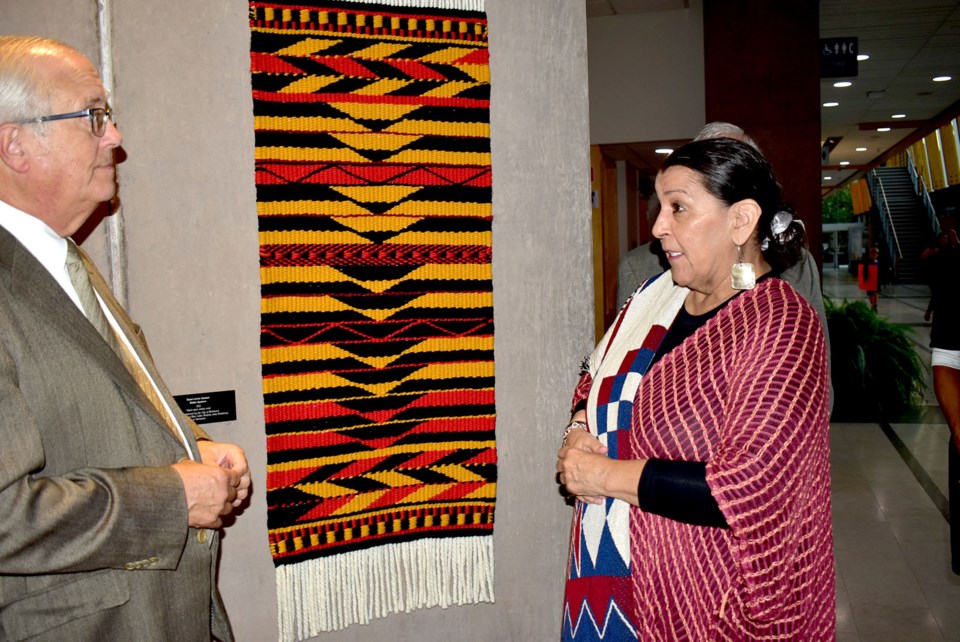Musqueam artist Debra Sparrow hopes a woven blanket, hanging in the foyer of Richmond City Hall, is the start of an artistic relationship between local First Nations and the city.
Sparrow, who created the black, gold and red wall hanging while she was artist-in-residence at the Blue Cabin in Steveston, is excited that woven art by First Nations is coming back, after being sidelined for more than 80 years.
“Visually, now you can start to see the people who were here and were always here, but we’ve been in the background,” Sparrow said.
Sparrow was the artist-in-residence at the Blue Cabin in April and May, at which time city council came to visit her, and it was decided they would commission a piece for the city.
The blanket came together organically as Sparrow created it, and, being on the Fraser River, she integrated elements from the water and the birds who live there.
“Having all the birds around us on the water, (I) decided to use one of our women’s way-back design elements that represented birds in flight,” Sparrow said.
The blanket is made from hand-spun sheep’s wool, and the colours – gold, red and black – are some of the favourite colours of local First Nations.
While a lighter yellow is more traditional, gold is more contemporary, Sparrow said. Red is common with Northwest Coast First Nations, so Sparrow uses red in her pieces to be more inclusive of all west coast First Nations.
The City of Richmond has always commissioned art, Sparrow said, but she hopes her woven blanket is the first Indigenous textile of many that will be displayed in city facilities.
“It’s not just about the art, it’s really about the history,” Sparrow said. “It’s about bringing back into this world a part of our life that’s been gone for 85 years, and understanding it and educating ourselves about the value of it.”
Sparrow was born and raised on the Musqueam Indian Reserve and is self-taught in Salish design and jewelry-making. Her contemporary work combines textile and Salish design into geometric, hand-spun blankets and hangings that can be found in museums and institutions including Vancouver International Airport, the Canadian Museum of Nature in Ottawa and UBC.


